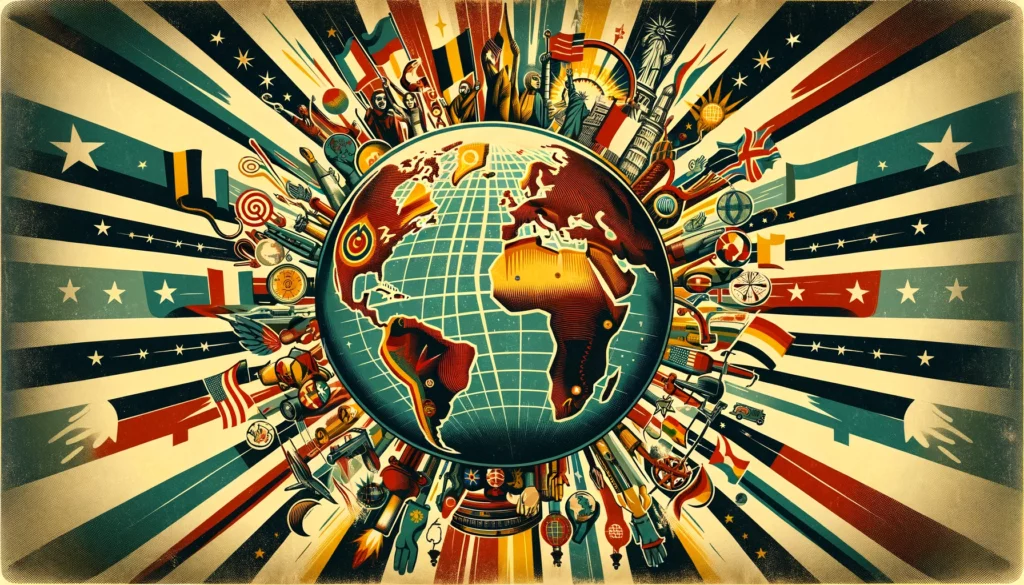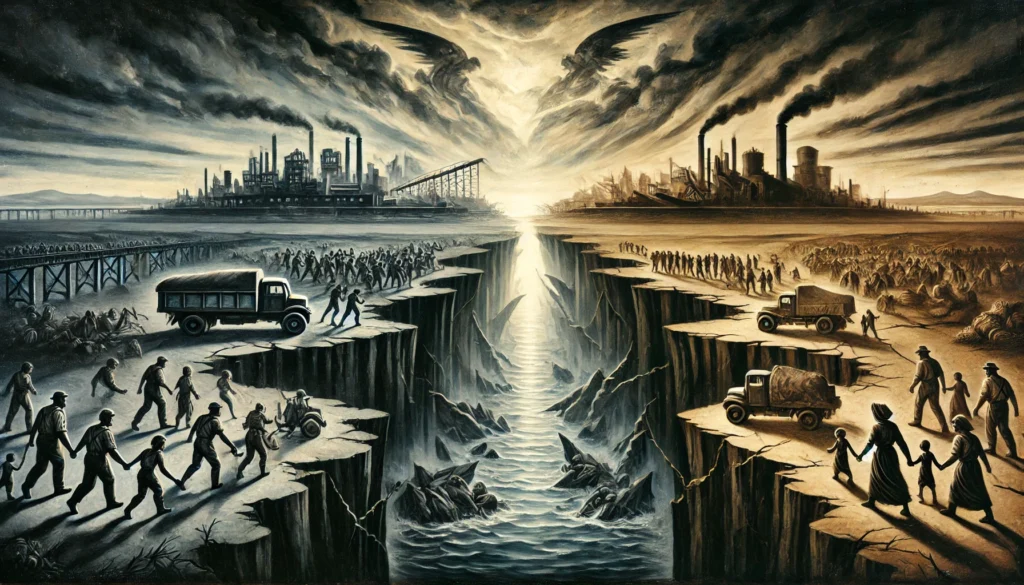Introduction
The border crisis narrative has become a staple of political discourse and media coverage in the United States, stirring public fear and debate. Amidst the cacophony of voices, the reality of the situation often becomes obscured, leaving the public with more questions than answers. What lies behind the surge in migration? Are the perceived threats justified, or are they a product of misinformation and rhetoric? This article seeks to peel back the layers of the border crisis, examining its causes, the impact on society, and potential solutions.

The Hype Around the Border Crises
The narrative surrounding the border crises is often charged with emotion and political bias, leading to a distorted view of the actual situation. Media outlets and political figures sometimes portray migrants as a monolithic threat, contributing to a climate of fear and hostility. However, statistics from organizations like the Pew Research Center and the Department of Homeland Security paint a different picture, showing that the majority of migrants are seeking better lives, escaping violence, or reuniting with family.
Root Causes of Increased Migration
The surge in migration to the United States cannot be attributed to a singular cause but rather to a confluence of factors deeply rooted in the socioeconomic and political fabric of the countries of origin. Central to these factors is the destabilization caused by decades of U.S. foreign policies and capitalist ventures that have often prioritized American economic interests over the stability and prosperity of these nations. From military interventions to economic sanctions and support for authoritarian regimes, the U.S. has played a significant role in creating the very conditions that drive people to flee their homes in search of safety and opportunity.
Moreover, climate change, exacerbated by global industrialization where the U.S. has been a major contributor, has led to deteriorating living conditions in many regions. Farmers and rural communities face unprecedented challenges, losing their livelihoods to drought, flooding, and changing weather patterns, compelling migration as a survival strategy.
Economic Impact: Myth vs. Reality
The economic impact of immigration is a hotly debated topic, with one side of the argument positing that immigrants take jobs from American workers and burden the welfare system. However, a body of research contradicts these claims, showing that immigrants play a crucial role in the economy. They fill essential labor gaps in industries such as agriculture, construction, and healthcare, often taking jobs that are hard to fill with domestic workers alone.
Immigrants also contribute significantly to innovation and entrepreneurship in the U.S. economy. According to the National Foundation for American Policy, immigrants have founded or co-founded companies such as Google, eBay, and Tesla, driving job creation and economic growth. Furthermore, the U.S. Department of Labor reports that immigrants contribute more in taxes over their lifetimes than they consume in public benefits, debunking the myth of economic drain.
Historical Context of Immigration
Immigration is woven into the fabric of American history, shaping the nation from its inception. Each wave of immigration has been met with resistance and controversy, yet over time, immigrants have enriched the cultural, economic, and social landscapes of the United States. The early 20th century saw large influxes of immigrants from Europe, followed by shifts in policy that opened the doors to Asia, Latin America, and Africa.
The history of immigration policy in the U.S. is a reflection of changing economic needs, political climates, and societal attitudes. The Immigration and Nationality Act of 1965, for example, ended quotas based on nationality and has led to the diversification of the immigrant population. This historical perspective highlights the cyclical nature of immigration debates and the ongoing challenge of integrating new waves of migrants into the fabric of American society.
Global Perspectives and Solutions

Looking beyond the U.S., several countries offer innovative approaches to immigration and integration. Canada, for example, uses a points-based immigration system that assesses applicants on factors such as education, work experience, and language proficiency, aiming to attract immigrants who are likely to succeed economically. Germany has implemented vocational training programs for refugees and migrants, integrating them into the workforce and addressing labor shortages in specific industries.
Sweden’s approach to integration includes extensive language training and social programs designed to facilitate cultural assimilation and employment. These examples underscore the importance of policies that recognize the economic and social contributions of immigrants, focusing on integration and mutual benefit.
Navigating Uncharted Waters: Immigration in the COVID-19 Era
The COVID-19 pandemic has added unprecedented challenges to the already complex issue of immigration, affecting migrants and policy responses in profound ways. During the pandemic, countries worldwide, including the United States, implemented strict border controls and public health measures, significantly impacting immigrants and asylum seekers.
The Immediate Impact of COVID-19 on Immigration
As the pandemic unfolded, many nations swiftly closed their borders in an effort to contain the spread of the virus. This sudden halt in movement left countless migrants stranded in precarious conditions, often in overcrowded camps or detention centers that lacked basic health facilities, making social distancing virtually impossible. The suspension of asylum processes and immigration courts further exacerbated the situation, creating a backlog of cases and prolonging the uncertainty for those seeking refuge and a new beginning.
Economic Hardships and Social Integration Challenges
The economic downturn triggered by the pandemic disproportionately affected immigrant communities. Many immigrants work in sectors hit hardest by COVID-19, such as hospitality, retail, and manufacturing, facing higher rates of unemployment. Additionally, the digital divide hindered children from immigrant families’ access to online education, setting back their integration and learning progress.
Post-COVID Recovery and Immigration
As the world begins to recover from the pandemic, the challenges and opportunities for immigration policy and integration have come to the forefront. The demand for labor in recovering economies has highlighted the essential role of immigrants in filling workforce gaps, particularly in healthcare, agriculture, and technology sectors. This situation presents a unique opportunity to reevaluate immigration policies, ensuring they align with economic recovery efforts and uphold humanitarian principles.
Adapting Policies for a Post-Pandemic World
The post-COVID era demands innovative approaches to immigration that consider public health, economic recovery, and social integration. Strengthening healthcare access for immigrant populations, expediting the processing of immigration applications, and investing in integration programs are crucial steps. These measures not only address the immediate challenges posed by the pandemic but also lay the groundwork for more resilient and inclusive societies.
The COVID-19 pandemic has underscored the interconnectedness of global communities and the need for compassionate, coordinated responses to the challenges of immigration. As the world moves towards recovery, it is imperative to embrace policies that recognize the dignity and potential of every individual, paving the way for a more equitable and hopeful future.
Conclusion: Towards a Sustainable Solution
The complexities of the border crisis and immigration policy demand a multifaceted and informed approach. By understanding the root causes of migration, recognizing the economic and cultural contributions of immigrants, and learning from global best practices, the United States can work towards sustainable solutions. The goal should not be to stem the tide of migration but to manage it in a way that honors the nation’s values, supports economic growth, and respects the dignity of all individuals seeking a better life.



